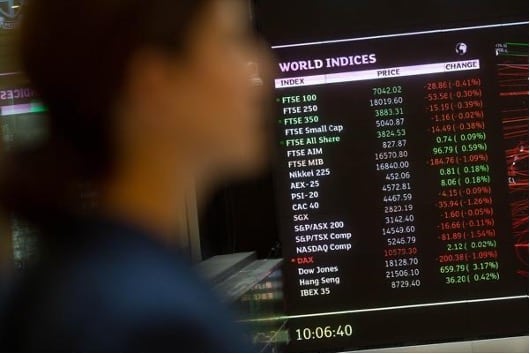Buying lottery tickets on the FTSE AIM can be very rewarding, but only for investors who have already properly diversified.

As an avid investor in the FTSE AIM market, I am used to spending hours researching high-risk, high-reward penny stocks that experience exceptional volatility. For perspective, 10% daily swings are not uncommon on the AIM market, but are usually a sign that something is going wrong at a FTSE 100 company.
I also focus on a handful of AIM sectors, including oil and gas, exploratory miners, tech, and biotech stocks. This can give the impression — and this is very much NOT financial advice — that I am a huge advocate for risky penny stock investing. Of course, my AIM philosophy is simple. I do look for companies with strong prospects that have been abandoned by rainbow chasers on the smallest bit of bad news, and then look to hold these undervalued shares for five+ years. But this is only one part of a wider investing strategy.

Diversification: Investing Strategy essentials
Portfolio diversification is an investing strategy used to allocate capital among a wide variety of investments to reduce exposure to any one particular asset or risk. Many investors choose to diversify their portfolios through a mix of equities, commodities, fixed income, cash, and cryptocurrency, assigning varying percentages dependent on their risk attitude.
It’s worth noting that fixed income performed admirably compared to both equities and cryptocurrencies in 2022, and investors with spare cash now have the opportunity to ‘buy the dip’ in equities when the recovery begins.
Lack of diversification within a portfolio usually generates a high level of volatility, including an increased risk-reward ratio. As an extreme example, investing all capital into a single stock means an investor’s returns are based entirely on one company’s performance.
This can be disastrous, as investors trade on imperfect information, and even the best companies can be hit hard from unexpected external sources. It can also be psychologically damaging — if one’s entire portfolio hinges on a singular RNS from one popular AIM stock, then untroubled sleep becomes a luxury.
With equities, it’s common for novice UK investors to start by buying shares in both a FTSE 100 ETF and a S&P 500 ETF. The oil and bank heavy FTSE 100 stocks provide dividend income during times of economic stress, while the S&P 500’s tech sector growth stocks provide outsized gains when times are good. In addition, this strategy allows for some geographical diversification.
For ultimate equity diversification, the FTSE All-World UCITS ETF is extremely popular, but has historically underperformed the S&P 500.
Understanding the advantages and setbacks
Here’s a fun fact for investors to consider: the S&P 500 has returned circa 8% per year between 1952 and 2022 for monthly-contributing investors. The 500 largest US-listed companies offer both the benefits of diversification and, in general, an inflation-beating return at relatively low risk.

Indeed, my monthly SIPP contributions are targeted almost exclusively at this index. Through pound-cost-averaging, S&P 500 investing acts as a hedge against market volatility, and most importantly requires no research. While this article is not advice, those with little excess cash could, and often do, do much worse than one of the major global trackers.
This means I can be confident of a comfortable retirement and leaves excess time to find AIM shares with the potential to bring exceptional returns. While the compound returns of major index investing is attractive, faster returns on the AIM market is where confident investors with excess cash and nerves of steel can reap significant rewards.
My top FTSE AIM shares for Q1 2023 are HARL, PREM, AVCT, and BOIL. Premier African Minerals has risen by over 1,500% since my initial investment in 2019, and I consider share price rises in the 300% range perfectly possible for all four through the next 12 months.
However, these companies are not risk-free, things do go wrong with investing on the AIM market, and all four could end in disaster (however unlikely). But it won’t be disaster for me as I am financially secure in my index investing, and in investments across other AIM companies diversified by both geography and sector.
It’s worth noting that the high risks of FTSE AIM investing are baked into share price valuations. It’s not uncommon to wake up to a 7am RNS detailing a nightmare scenario that tanks a company’s share price within hours or even minutes.
Finally, there’s the psychological element to consider. AIM shares are far less covered by mainstream media, so investors often tend to get information from social media. This comes with a high risk of operating within an echo-chamber of positive opinion as investors actively following a company are far more likely to have positive opinions. Those with negative thoughts simply aren’t commenting.
This article isn’t meant to dissuade investors from shares on the AIM market, many of which are exceptional opportunities. But in conclusion, it’s rarely rewarding to put every one of your eggs in one overfilled basket.
DYOR.
This article has been prepared for information purposes only by Charles Archer. It does not constitute advice, and no party accepts any liability for either accuracy or for investing decisions made using the information provided.
Further, it is not intended for distribution to, or use by, any person in any country or jurisdiction where such distribution or use would be contrary to local law or regulation.

Leave a comment